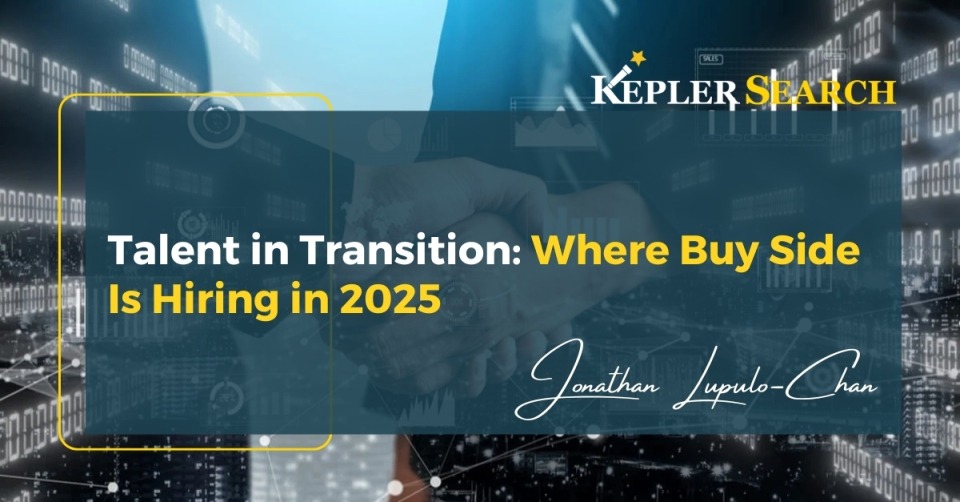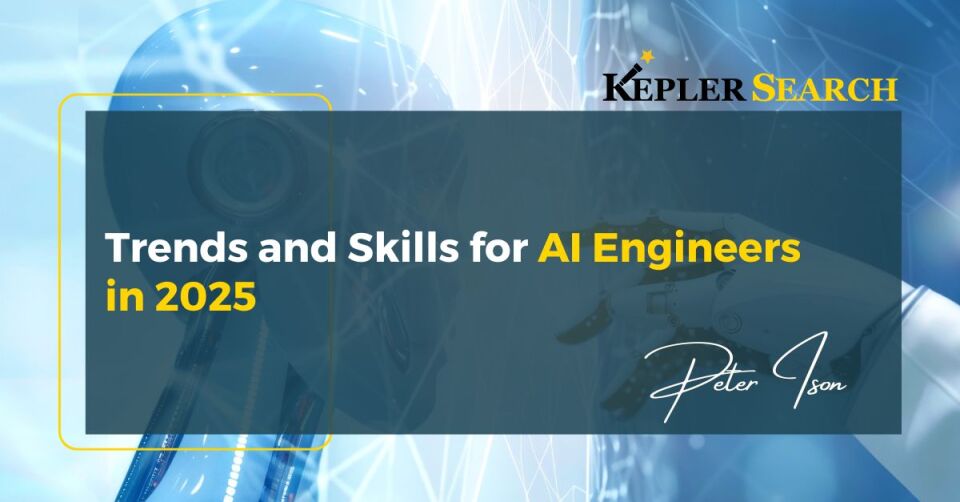AI engineering is the discipline that transforms machine learning research and data science models into scalable, reliable, and secure production systems.
While data scientists focus on exploring data and creating proof-of-concept models, AI engineers ensure those models work effectively in the real world.
An AI engineer typically:
• Collaborates with data engineers to build data pipelines that feed models clean, relevant, and timely information.
• Selects and trains appropriate machine learning models for the business problem.
• Integrates AI into customer-facing products or internal tools.
• Ensures monitoring, retraining, and scaling of models over time.
• Thinks about cost efficiency, latency, and compliance.
Why this role is business-critical now:
• AI is revenue-generating, not just experimental. Product launches now rely on AI-powered features as differentiators.
• The talent pool is still maturing. Hiring right the first time is crucial because demand far outstrips supply.
1. Advanced Skills for AI Engineers
Hiring at the senior AI engineering level requires looking for more than just coding and deployment skills. At this stage, you need strategists and system architects who can align AI initiatives with business goals and shape a company’s technical direction. The following skills distinguish good candidates from exceptional ones.
1.1 AI System Architecture
Why this matters
At senior levels, the challenge is rarely “Can we train a model?” It is “Can we build an AI ecosystem that is scalable, maintainable, and cost-efficient over years?” Senior engineers must think in terms of architectural patterns rather than isolated models.
What to look for
At senior levels, the challenge is rarely “Can we train a model?” It is “Can we build an AI ecosystem that is scalable, maintainable, and cost-efficient over years?” Senior engineers must think in terms of architectural patterns rather than isolated models.
• Designs end-to-end AI pipelines, from data ingestion to monitoring and retraining.
• Balances scalability, latency, cost, and maintainability in their design choices.
• Understands how AI interacts with the company’s broader technology stack.
Example in practice
A senior engineer tasked with creating a real-time recommendation system for an e-commerce platform does not just focus on the model. They design a streaming architecture using tools like Kafka for ingestion, Spark Structured Streaming for feature updates, and Kubernetes for serving, ensuring the system can handle peak loads during major sales.
Strong candidate behaviors
• Produces architecture diagrams that can be understood by both engineers and executives.
• Anticipates scaling issues before they arise.
Weak candidate behaviours
• Focuses solely on the model without considering deployment or maintenance implications.
• Designs for “perfect” scenarios without considering operational realities.
Interview probe
“Describe the architecture of an AI system you designed. How did you ensure it could scale while remaining cost-efficient?”
1.2 Translating Research into Production
Why this matters
The AI field moves quickly, with new research emerging constantly. A senior engineer must evaluate these developments, decide what is worth adopting, and lead the process of turning it into a production-ready system.
What to look for
• Ability to read and critically analyze academic papers.
• Experience prototyping cutting-edge techniques and measuring ROI.
• Knows when to adopt a new technology and when to stick with proven methods.
Example in practice
An engineer reads about a novel transformer architecture for time-series forecasting. Instead of blindly implementing it, they run a quick proof-of-concept on historical company data to confirm meaningful performance gains before proceeding.
Strong candidate behaviors
• Balances innovation with stability.
• Validates new ideas with measurable tests.
Weak candidate behaviours
• Chases the latest trend without clear justification.
• Ignores new developments entirely.
Interview probe
“Tell me about a time you implemented a technique from recent AI research. How did you decide it was worth the effort?”
1.3 AI Expertise
Why this matters
In sectors like finance, healthcare, manufacturing, or defense, AI expertise is the true differentiator. While domain-specific knowledge helps fine-tune solutions, it can usually be taught in a reasonable timeframe. Advanced AI skills like designing robust architectures, handling complex data, optimizing for performance and scalability, take a longer time to develop and are far harder to acquire. A strong AI engineer can quickly absorb the industry context and apply their technical mastery to build compliant, usable systems.
What to look for
• Proven AI expertise with the ability to adapt to new industry contexts.
• Track record of translating domain constraints into technical design.
• Understanding of how to optimize AI performance while meeting business needs.
Example in practice
A senior AI engineer entering healthcare may not know every regulatory acronym on day one, but they can learn them. What they already bring is the rare skill to create a radiology image analysis model that is accurate, explainable, and architected to pass FDA review, all while integrating seamlessly into hospital PACS systems without disrupting workflows.
Strong candidate behaviors
• Leverages AI mastery to rapidly bridge domain knowledge gaps.
• Anticipates industry-specific compliance and workflow requirements early.
• Delivers technically excellent systems that still meet operational realities.
Weak candidate behaviours
• Over-prioritizes domain familiarity at the expense of technical depth.
• Assumes AI expertise can be learned “on the fly” while underestimating its complexity.
Interview probe
“Tell me about a time you entered a new industry. How did your AI expertise help you deliver a high-quality solution despite initially limited domain knowledge?”
1.4 AI Governance and Policy
Why this matters
As AI becomes central to business operations, organizations must ensure their systems are auditable and compliant. Senior engineers are crucial in establishing these governance frameworks that junior engineers work within.
What to look for
• Knowledge of emerging AI regulations and compliance requirements.
• Experience defining approval workflows for model deployment.
• Familiarity with audit and documentation best practices.
Example in practice
A senior engineer at a financial institution helps draft an internal AI policy requiring a fairness audit for all models before deployment and mandates that all training data sources be documented for regulatory review.
Strong candidate behaviors
• Collaborates with legal, compliance, and security teams.
• Proactively implements governance measures before regulations force the change.
Weak candidate behaviours
• Sees governance as unnecessary bureaucracy rather than risk management.
• Cannot explain how to verify a model’s compliance.
Interview probe
“What governance measures have you implemented in past AI projects to ensure compliance and accountability?”
1.5 Strategic Tooling and Vendor Management
Why this matters
Choosing the wrong AI tools or platforms can lead to years of technical debt and vendor lock-in. Senior engineers must make tooling decisions that balance short-term productivity with long-term flexibility.
What to look for
• Understands trade-offs between open-source and proprietary solutions.
• Evaluates vendor contracts with an eye on integration costs, exit strategies, and scalability.
• Keeps the team’s skill set in mind when selecting tools.
Example in practice
When building a computer vision system, a senior engineer decides against a proprietary SDK that offers slightly better accuracy because it would lock the company into a single vendor for hardware and software. Instead, they choose an open-source alternative, ensuring the team can adapt as needs change.
Strong candidate behaviors
• Justifies tooling choices in business as well as technical terms.
• Plans for future migration or integration needs.
Weak candidate behaviours
• Picks tools based on familiarity rather than fit.
• Ignores the long-term cost of proprietary lock-in.
Interview probe
“Tell me about a time you had to choose between an open-source and a proprietary AI tool. What factors did you consider?”
2. Experience vs. Credentials
In the early days of AI hiring, most candidates came from research labs or had advanced degrees in computer science, data science, or applied mathematics. Today, the AI engineering talent pool is far more diverse. Some of the most effective AI engineers have never completed a formal computer science degree, while others hold multiple advanced qualifications but lack real-world delivery experience.
For hiring managers, the question is: When should you prioritize proven, hands-on experience over formal credentials, and when do qualifications still matter?
2.1 Why Experience Often Trumps Formal Education
The reality in fast-moving AI environments
• AI frameworks, tools, and methodologies evolve at a pace that outstrips traditional academic cycles. By the time a technique makes it into a university syllabus, industry may have already moved on.
• Engineers with GitHub portfolios, hackathon wins, and open-source contributions have tangible proof that they can design, build, and deploy AI systems.
• Silicon Valley and other leading AI hubs increasingly treat project history as the primary currency for hiring decisions.
Example in practice
A candidate without a master’s degree presents a GitHub repository of a fully functional NLP chatbot with a retraining pipeline, automated testing, and containerized deployment. This provides a clearer indication of capability than a transcript showing they passed a machine learning course two years ago.
Strong candidate behaviors
• Maintains active public repositories or contributions to high-quality open-source projects.
• Can explain design decisions made in their real-world projects.
• Has a track record of delivering AI features to production environments.
Weak candidate behaviours
• Lists “familiarity” with frameworks but has no public or private code to show for it.
• Relies entirely on academic coursework with no real-world application.
Interview probe
“Can you walk me through a project you’ve built outside of a formal academic setting? What problem were you solving, and what did you learn?”
2.2 When Credentials Still Matter
While practical experience is often the most valuable hiring signal, formal qualifications remain important in certain situations. These typically include roles where:
• The industry is heavily regulated and requires certified knowledge.
• The work involves fundamental research or algorithmic innovation, where deep mathematical expertise is essential.
• The employer participates in government-funded or academic partnerships where credential requirements are mandated.
Example in practice
A research-heavy AI role in a pharmaceutical company may demand a PhD in bioinformatics or computational biology because the engineer must design entirely new modelling approaches for drug discovery.
Strong candidate behaviors
• Can connect their academic research to practical applications.
• Keeps academic knowledge current by integrating new industry techniques.
Weak candidate behaviours
• Over-relies on theoretical background without adapting to engineering constraints.
• Cannot demonstrate application of research skills in production systems.
Interview probe
“How have you applied the theoretical knowledge from your degree to solve a real-world engineering problem?”
2.3 The Hybrid Ideal
The most impactful senior AI engineers often combine deep academic grounding with a portfolio of applied work. They have the theoretical understanding to navigate complex modelling problems and the engineering skills to build robust, scalable systems.
Signs you’ve found the hybrid ideal
• Holds an advanced degree but also has live production deployments to their name.
• Can translate research concepts into engineering decisions.
• Has a mix of published papers and public repositories or product launches.
Example in practice
An engineer with a PhD in computer vision who also built and deployed a scalable defect detection system for a manufacturing line. They understand both the mathematical underpinnings and the operational realities of the work.
2.4 Hiring in the Real World
To avoid missing out on great candidates, consider these strategies:
• Define the non-negotiables: Decide whether the role genuinely requires a degree or if equivalent, hands-on experience is acceptable.
• Ask for project evidence: GitHub, Kaggle competitions, hackathon projects, or portfolio write-ups.
• Simulate the work: Use technical challenges that reflect the actual environment the candidate will work in.
• Weigh delivery record over time served: Recognize that a junior with two years of real-world AI deployment experience may outperform a senior academic with no production experience.
• Speak to specialized executive search firms, as they often have access to a larger pool of candidates that you might not be aware of.
3. Key Takeaways for Hiring Managers
The right hire will influence product direction, improve operational efficiency, and help your organization remain competitive in an industry that changes by the month. Conversely, the wrong hire can lead to wasted resources, stalled projects, and lost market opportunities.
3.1 Look for Builders, Not Just Theorists
Why this matters
In most commercial AI roles, the true value lies in turning concepts into production-ready systems. A candidate who can only design models in a lab environment will struggle to create sustainable solutions for real-world constraints.
How to apply it
• Prioritize candidates who have delivered working AI systems into production.
• Ask for examples where they had to adapt theory to meet deadlines, budgets, or operational realities.
• Understanding of how to optimize AI performance while meeting business needs.
What to avoid
• Over relying on academic credentials without evidence of practical skills.
3.2 Assess Problem-Solving in Ambiguous Situations
Why this matters
Business problems are rarely clean or fully defined. AI engineers must be comfortable shaping the problem before they solve it.
How to apply it
• Use interview questions that simulate incomplete or messy requirements.
• Look for candidates who ask clarifying questions and propose structured approaches.
What to avoid
• Hiring candidates who dive straight into technical details without confirming they understand the problem.
3.3 Weigh Practical Experience as Highly as Credentials
Why this matters
Many of the best AI engineers have built their skills through projects, open-source work, and hackathons rather than through traditional academic pathways.
How to apply it
• Review GitHub repositories, Kaggle profiles, and public project portfolios.
• Use take-home challenges that reflect your real environment.
What to avoid
• Relying solely on formal qualifications as a filter.
3.4 Prioritize Strategic and Architectural Thinking
Why this matters
Senior AI engineers influence long-term technical direction, vendor relationships, and governance frameworks. Their decisions will have consequences for years.
How to apply it
• Assess their ability to design scalable AI architectures, evaluate new research for practicality, and manage vendor relationships.
• Ask for examples where they balanced innovation with operational stability.
What to avoid
• Promoting technically skilled mid-level engineers without confirming they have the strategic skills for leadership.
3.5 Build an Interview Process That Tests Real-World Capability
Why this matters
A candidate’s ability to solve textbook problems does not always translate into success in your environment.
How to apply it
• Include scenario-based assessments and pair programming with your team.
• Provide datasets that mimic your actual challenges, including messy or incomplete data.
What to avoid
• Relying entirely on standard algorithm whiteboard questions.
3.6 Treat AI Hiring as an Ongoing Investment
Why this matters
The AI field evolves rapidly. A great hire today may need new skills in two years to remain effective.
How to apply it
• Create pathways for continuous learning and professional development.
• Encourage participation in conferences, courses, and industry forums.
What to avoid
• Viewing AI hires as “set and forget” resources.
4. Final Words
AI engineering has become a business-critical function that directly shapes competitiveness, customer experience, and long-term strategy. Hiring the right AI engineer means bringing on someone who can think like a researcher, build like a software engineer, and operate like a systems architect, all while staying grounded in business realities.
As a hiring manager, select people who will shape your organization’s AI future. This means looking beyond CVs and certificates, probing for real problem-solving ability, and weighing collaboration skills as heavily as technical knowledge. It means creating an environment where talent can grow, because the AI landscape will look very different in just a couple of years.
Choose wisely, invest in people, and build a team that can deliver meaningful, lasting impact.



